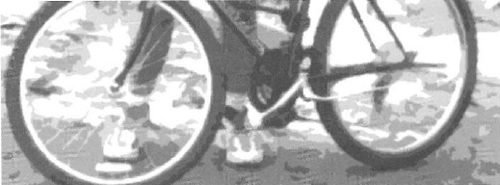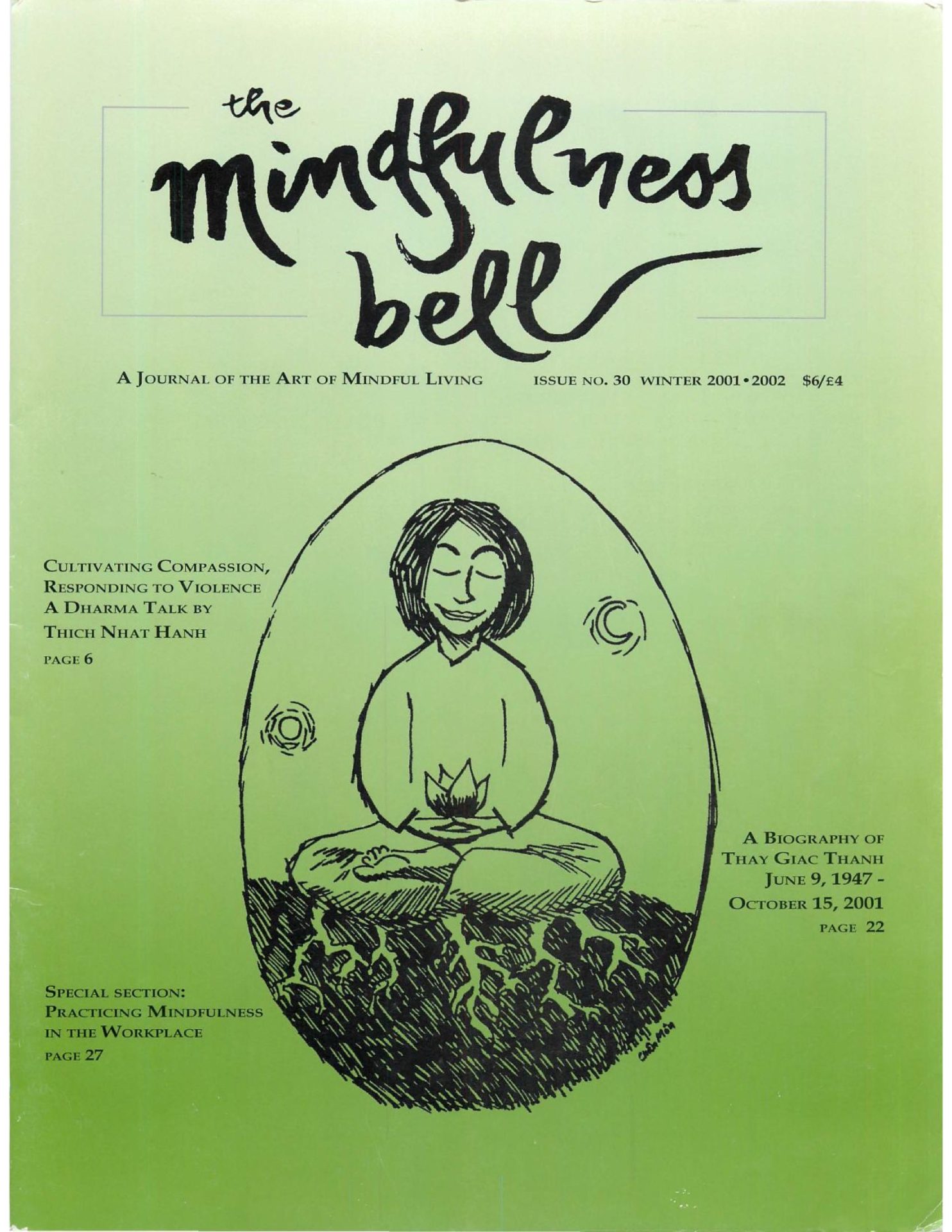By David Percival
For most of us, the commute to and from work is a daily reality. I am fortunate to be able to bicycle to work, weather permitting, which in New Mexico is most of the time. Unfortunately, I think it is safe to describe the streets of most of our cities as not being bastions of mindfulness. Furthermore, most streets and roads have been designed for cars, not bicycles. You can be entering a battleground of inattentive,
By David Percival
For most of us, the commute to and from work is a daily reality. I am fortunate to be able to bicycle to work, weather permitting, which in New Mexico is most of the time. Unfortunately, I think it is safe to describe the streets of most of our cities as not being bastions of mindfulness. Furthermore, most streets and roads have been designed for cars, not bicycles. You can be entering a battleground of inattentive, careless and sometimes hostile drivers, narrow roads full of holes and glass, and the occasional vicious dog. Yet, it is a joy to leave the car in the garage, enjoy the peace and cal m of an empty road in the early morning before the heat of the day takes over, go through a quiet neighborhood, and do your small part to lessen congestion and pollution.
First, plan ahead, especially if you have just started riding. Get a map and plot the safest, most direct route. Avoid, when possible, riding on major highways and busy main streets during the rush hour. Imagine trying to be mindful on a heavily traveled main street during the evening rush hour when you end up too close to cars parked on your right and vehicles are rushing by you on the left.
As you leave your house in the calm of a peaceful morning, understand that this situation could change in an instant. Leaving your driveway is an important time to be mindful of the present moment, to be aware of where you are and of your surroundings, and to focus on what you and others are doing this moment. As you get ready to leave, stop for a moment and take a few seconds to breathe. Concentrate on the task at hand: to get from your house to where you work happily and in one piece. Be aware that at any moment you may suddenly find yourself in a sea of unmindful drivers in large metal objects that could cause you harm.As in others situations, when you bicycle it is easy to be lost in your thoughts, worrying about the project you have to complete at work, or wondering if your children are safe at school. Be totally aware you are riding your bicycle, not thinking about home, work, or problems. Riding your bicycle is the most important thing in your life at that moment. Being mindful and in the present moment has never been more important.
You may think at first that the constantly changing pace of bicycling does not lend itself to mindfulness. It is frantic at times, when you are trying to wind your way through rush hour traffic, make it up that long hill you are unable to avoid, or wait for the traffic to clear so you can cross a busy street. Yet, like most things we do, bicycling is made up of a series of changing rhythms. And, as in sports or other aerobic activity, bicycling is a wonderful opportunity to observe and monitor your breathing. Indeed, bicycling is a working meditation, where your breath can be uncomfortably obvious at times, particularly when you reach the top of that long hill.
As you change gears, note the changing rhythm of your pedaling. Listen to the rhythm of the cracks in the road. Follow the rhythm of your heart as it talks to you. Note the ever changing rhythms as you proceed down the street, going slower, faster, stopping, starting, easing into traffic, moving out of the way of other vehicles. If your breath is fast on a hill, note that your breath is fast; when it slows down on a flat stretch, note that it is slower. With eyes wide open, concentrate on the constantly changing rhythms of your breathing. On your daily ride when your mind starts slipping away, keep coming back to the reality of the present moment. As thoughts come to mind, be aware of them, then let them go.
Events happen fast on roads and highways and often there is no time for reflection. You must react with an instant mindfulness.
Continue to bring yourself back to the present with your breathing, to your little moving space on a city street. Your awareness of your space and what is around you and what is just ahead is your protection. Be in complete awareness by watching the changing rhythms of your breath. Thay says in The Miracle of Mindfulness, "Keep your attention focused on the work, be alert and ready to handle ably and intelligently any situation which may arise - this is mindfulness."
Make things that you see or hem" along the road be beacons of mindfulness: stoplights, stop signs, church bells, factory sirens, trains, buses, bus stops, familiar landmarks you see everyday such as parks, playgrounds, gardens, statues, towers, antennas, unusual buildings or special trees. Let them all be Buddhas, bells of mindfulness. Come back to your breath as you see these friends; smile as you go by.

Often, you can't avoid crossing a busy street; you have to wait for traffic to clear and your movement is halted. Take a moment to rest, slow yourself down, observe the neighborhood, note your heartbeat, check on the rhythm of your breathing at the moment, breathe in and out and smile at the passing traffic, note the rhythm of the endless stream of passing cars, and then carefully move across the street when it is safe.
As you move along the streets of your city, continue to smile at passing cars and people in their yards. Smile and wave your thanks to drivers who allow you the right-of-way. Observe the unmindful, careless intensity of some drivers intent on getting somewhere at any cost. Smile compassionately at them and let them go.
Beware of the seeds of your anger. These seeds are in us and can sprout instantly, sometimes at the slightest infraction. Anger can grab us and throw us into a profoundly unmindful state and lead to distraction and forgetfulness. New riders, especially, have to learn not to cling to anger and frustration which can put us in danger. Anger while bicycling is often a knee-jerk reaction to an object on the road or another person's mindlessness and forgetfulness. I have found myself angry at a pothole, a puddle, a broken bottle, at other people's anger, and other equally insignificant things. I have driven for several city blocks with no recollection of doing so because of being taken over by my anger.
After many years of riding, I have trained myself to tum it all around, to let the potholes, the puddles, the broken bottles, the unmindful drivers, and the angry dogs be flashing beacons of mindfulness. These beacons transmit an instant message to me: let the feeling go and return to mindfulness. Remember, the driver that cut you off is gone; the pothole that jarred your brain is behind you; the obnoxious dog ran off. Let your negative angry thoughts do the same.
I have also found that keeping a half-smile on my face is of great importance. It is very difficult to be angry when I am smiling. Sometimes I do as Thay has suggested and make a contract with my pathway to ride mindfully the entire distance. Another way to stay mindful is to make up a gatha and recite it at regular intervals, such as: I am riding the path of mindfulness. I am riding the street of peace. I am riding the road of understanding.
Now when I ride, when seeds of anger or frustration do appear in my consciousness, through continuing practice they dissolve almost instantly and are gone. It is possible to immediately come back to myself.
Allow the rhythms of your breathing and your mindfulness to be your protection during your daily bicycle commute or any other time you are riding. And, by the way, wear a helmet, go with the traffic, follow the rules of the road, use lights at night, and keep a smile on your face.
David Percival, True Wonderful Roots, lives in Albuquerque, New Mexico, and is a founding member of the Rainbow Sangha. He was ordained into the Order of Interbeing at the San Diego retreat in August.

